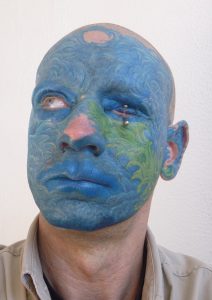1.2 Deviance, Rule Violations, and Criminality
Shanell Sanchez; Kate McLean; and Pamela Simek
Louisiana’s No Man’s Land—Crime and Deviance
Video credit: 435American. (2020, June 4.) Louisiana’s Lawless Territory: The Neutral Strip Explained [Video]. YouTube.
Just about everyone in society has done something that someone else would disagree with and see as deviant.
From a sociological perspective, social norms—or unofficial rules of behavior—are all around us. Social norms are specific to social groups, which means that living in a diverse society can make it hard to always fit in. The group you are in can change, which would mean the norms and behaviors that are acceptable at any given time may change.

Deviance is behavior that departs from the social norm. The sociologist Erich Goode argues that four things must happen in order for something deviant to take place or exist:
1) a rule or norm must be established; 2) someone has to violate that rule or norm; 3) there must be an audience or someone that witnesses the act and judges it to be wrong; 4) and there must be a negative reaction from that audience that can come in many forms (i.e., mockery, criticism, disapproval, punishment, and more; Goode, 2015). When performed by family, friends, teachers, or other actors outside the criminal justice system, such negative reactions represent examples of informal social control. On a day-to-day basis, deviance is much more likely to be met, and suppressed, by informal social control. By contrast, formal social control refers to negative sanctions applied by criminal justice actors (such as the police), in response to criminal acts. In fact, laws are simply social norms that have been enshrined, and are enforced, by the government.
To commit an act of deviance, one does not need to act dangerously or harmfully, and not all acts that are deviant are criminal. For that matter, not all criminal acts are deviant either. Deviance falls on a spectrum that can range from really-deviant to not-so-deviant, but in any case, it is dependent on the audience. Think back to the marijuana use and arrest statistics in the previous chapter. If we take our reference point as federal law, marijuana use is certainly a crime. But if we consider the sheer number of people who use, or have used marijuana, is this behavior deviant—and for whom?
Behavior that departs from the social norm
Form of social control that outlines rules, habits, and customs a society uses to enforce conformity to its norms

